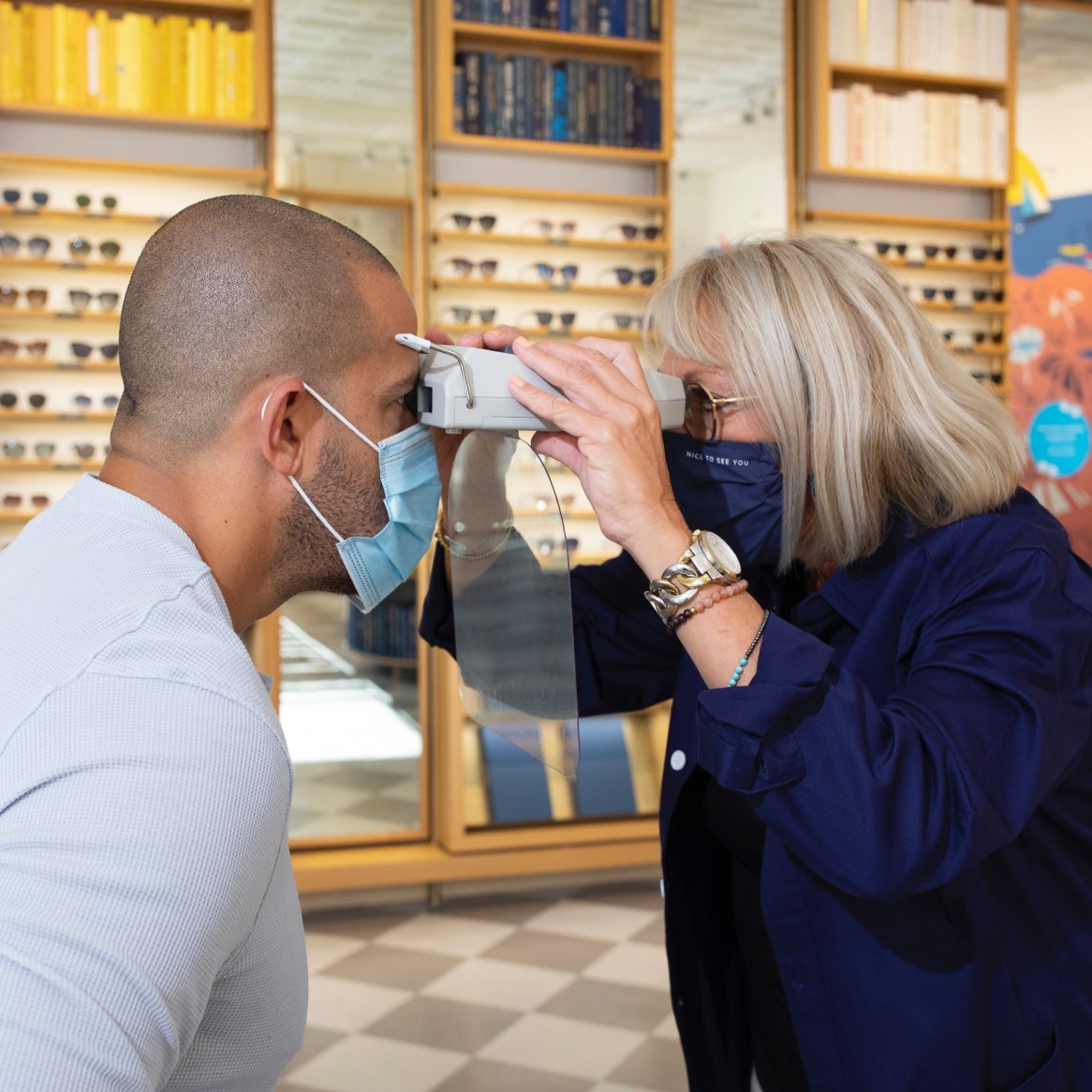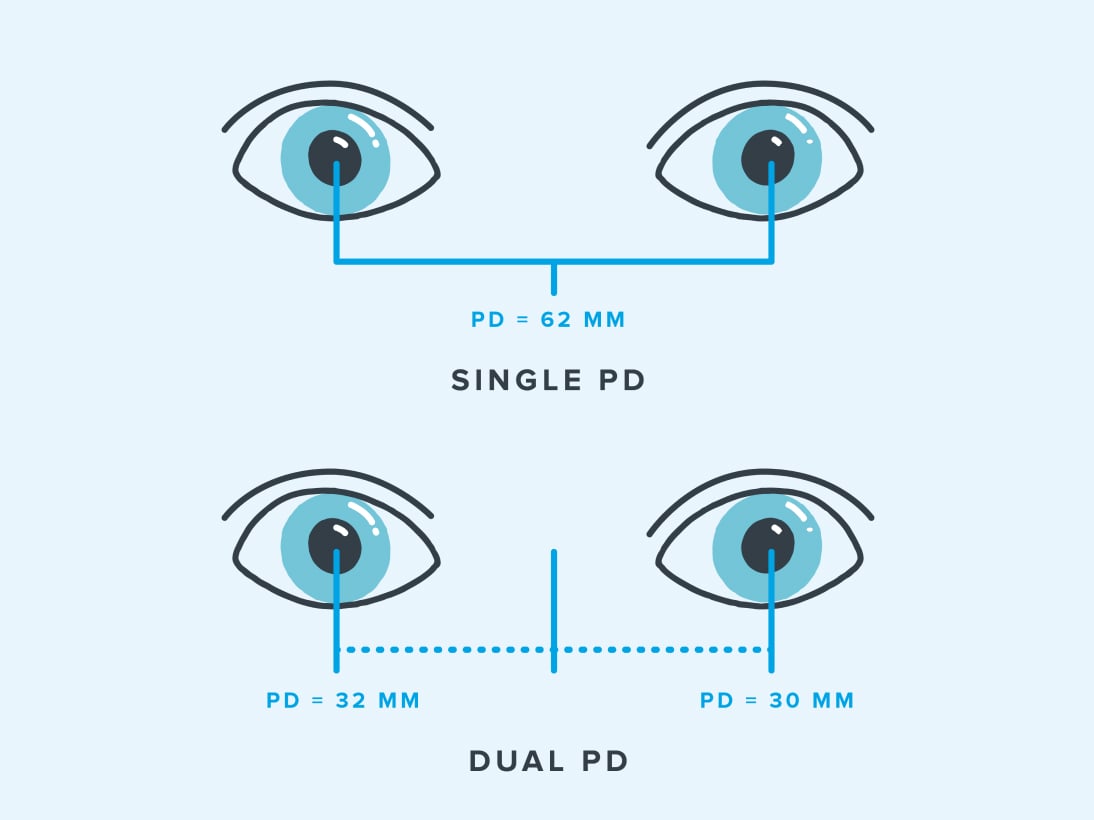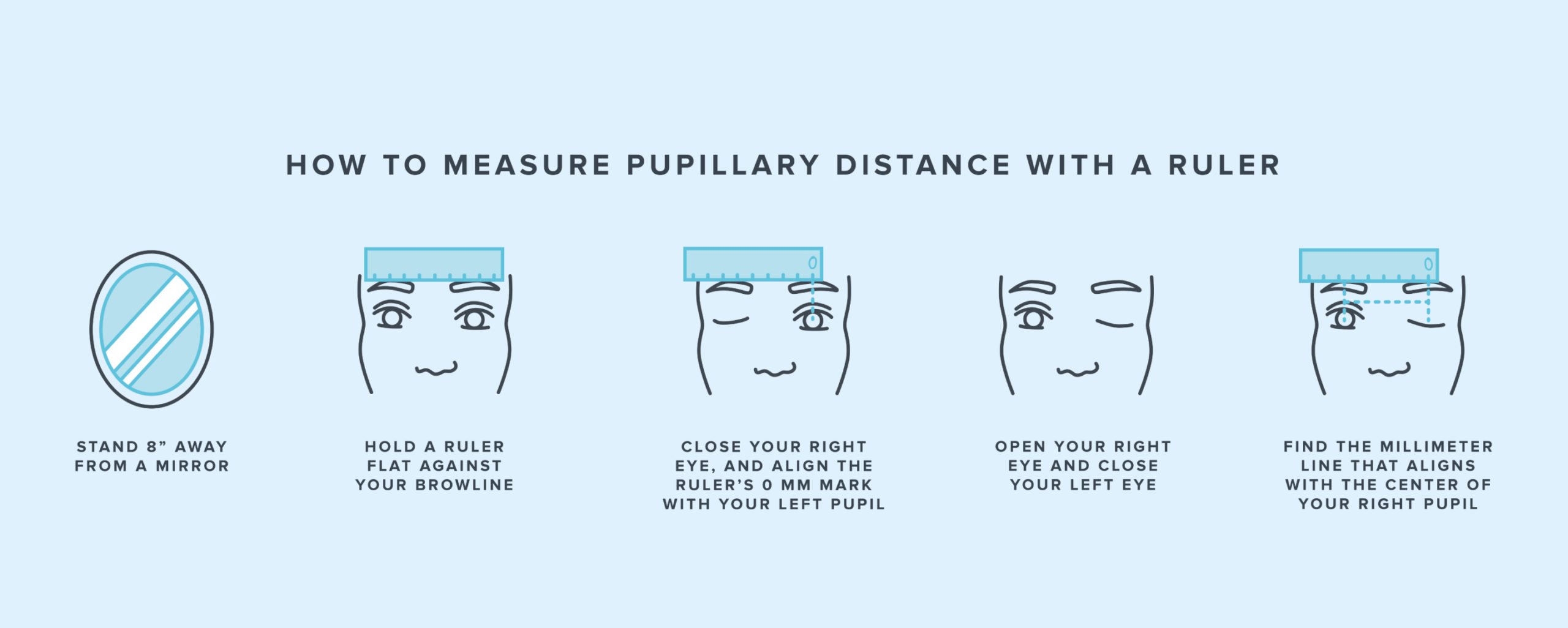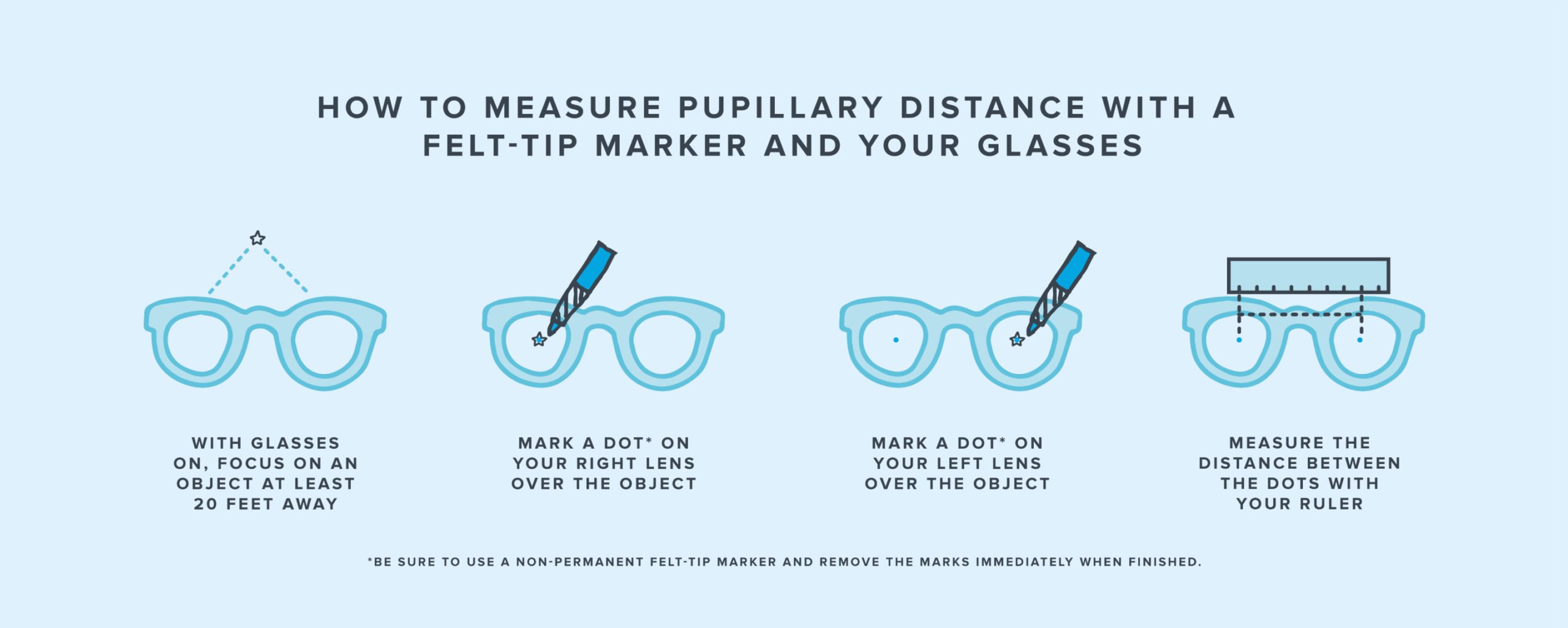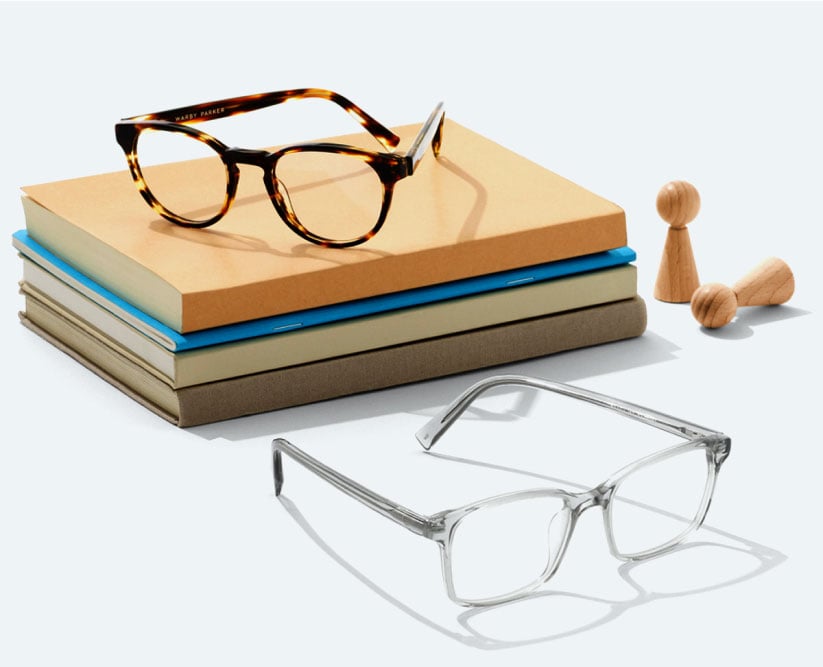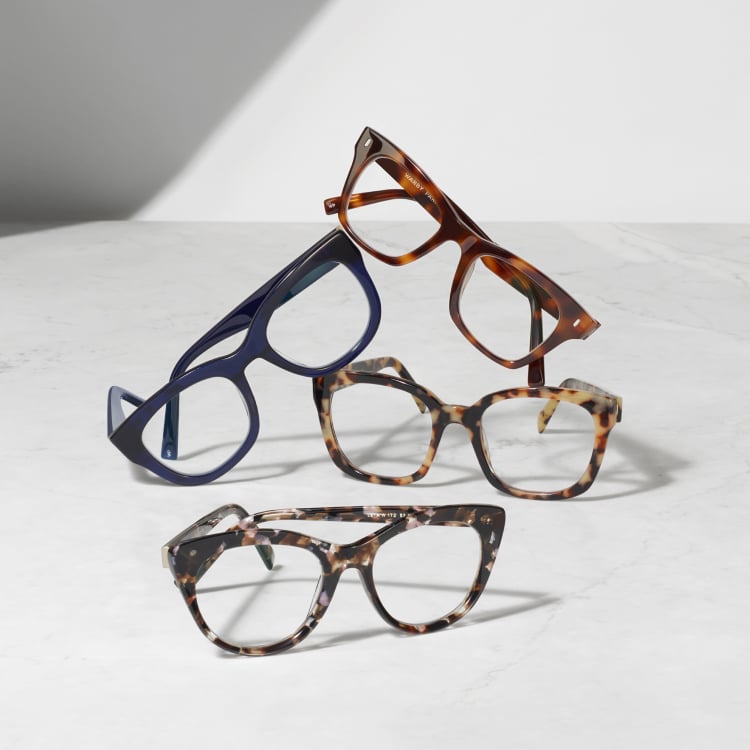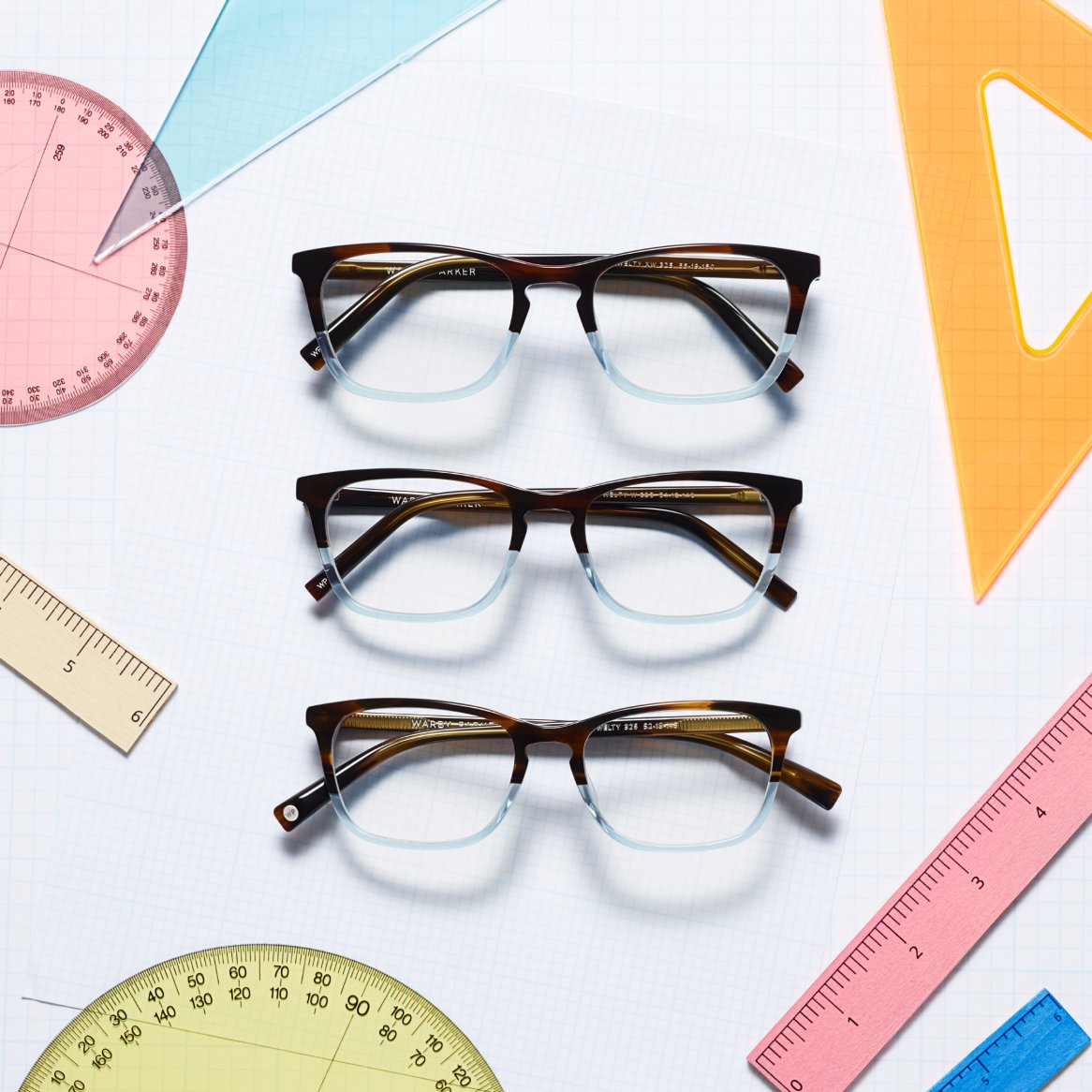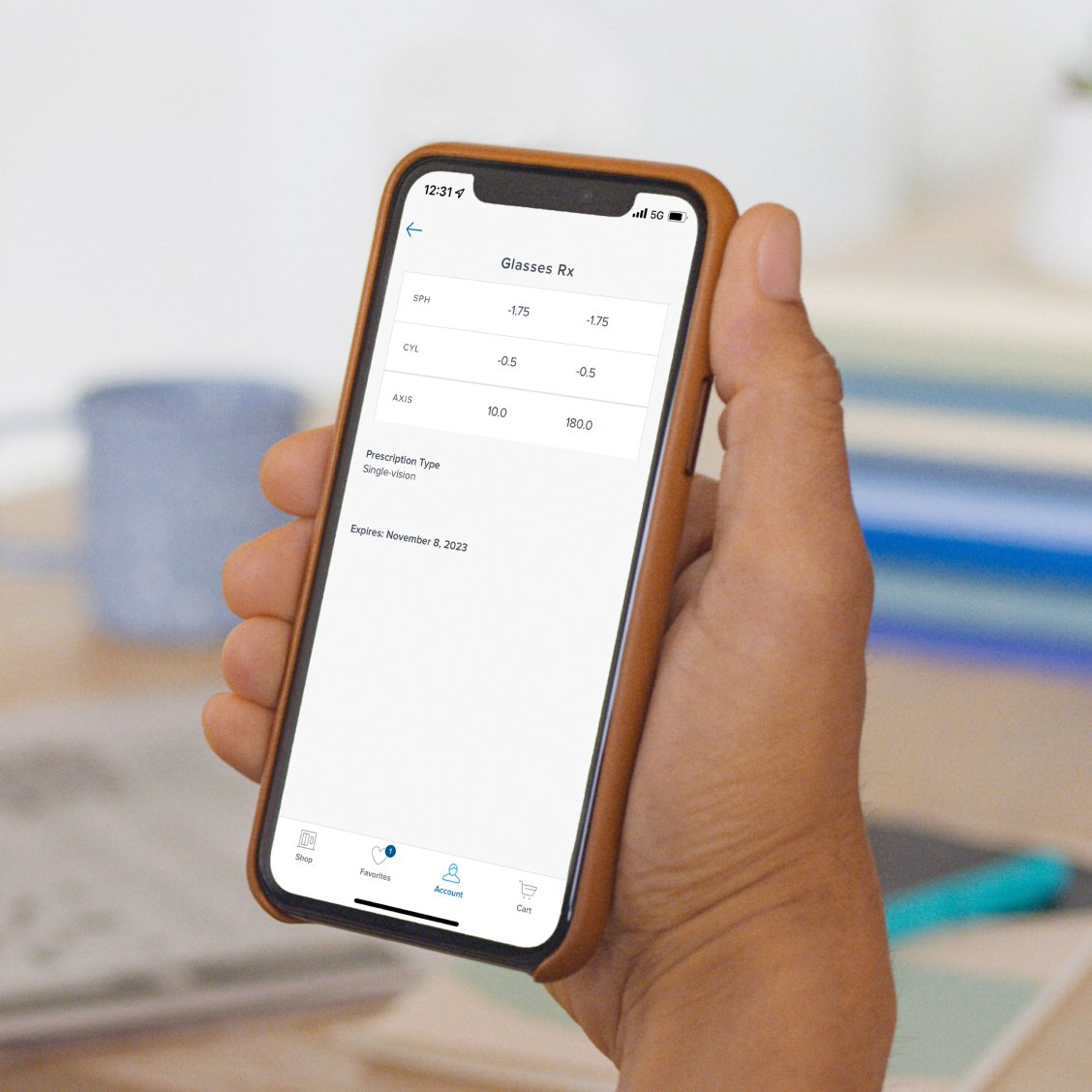You might have seen “PD” on your eye prescription, or maybe you were trying to order glasses online and got a little confused when prompted for your “pupillary distance.” These aren’t terms you’re likely to hear outside of these scenarios, so don’t worry if they’re new to you.
In this guide, we’ll explain what pupillary distance (PD) is and how to measure it yourself with household items or our handy online tools.
What Is Pupillary Distance?
Pupillary distance (PD) is the measurement of the distance between your eyes’ pupils, expressed in millimeters. Your optician or eye doctor can measure your PD at your eye exam with an instrument called a pupillometer. Sometimes your PD is included on your prescription, but not always.
A PD measurement from a pupillometer will always be the most accurate. Still, there are many other ways to get a reliable measurement if needed (we’ll get to measuring methods in just a moment).
Why Pupillary Distance Is Important
Your eyeglass lenses have an “optical center,” which is the ideal spot for your pupil to look through in order to have optimal vision. Having an accurate PD measurement is the key to getting your lenses to line up with your pupils and provide the best possible results from your eyewear.
Single PD vs. Dual PD
Single PD is the standard measurement of the distance from the center of one pupil to the other. This is also called “binocular PD.”
Dual PD measures the distance between the center of each pupil to the bridge of the nose. That means this measurement has two numbers—the first number is the measurement for the right eye (OD), and the second is for the left eye (OS). A dual PD measurement is usually written like this: 31/30. This is also known as “monocular PD” and is helpful if you’re getting progressives.
Read more: OD vs. OS: What Do They Mean?
A single or dual PD can be used to order any glasses except for reading glasses. To get the gross pupillary distance for reading glasses, simply subtract 3 mm from your single PD (or subtract 1.5 mm from each eye’s number in your dual PD) to get your “near PD.”
What Is a “Normal” Pupillary Distance?
An average pupillary distance for adults is around 60-64 mm. But there isn’t really a “normal” PD—everyone is different, and this number can vary widely from person to person.
How To Measure PD at Home
Measuring pupillary distance could be summarized in as few as two simple steps: grabbing a ruler that shows millimeters (or an alternative online tool) and carefully measuring the distance between the centers of your pupils. However, these steps can have many nuances and details involved, and there’s more than just one way to measure PD.
Whichever method you try, we recommend that you measure several times to ensure your PD is as accurate as possible.
If your prescription includes a prism correction, it’s best to have your PD measured by your eye doctor or optician.
How To Measure Pupillary Distance—Option 1: Ruler and a Mirror
To measure your pupillary distance with this method, you’ll need a mirror and a ruler that shows millimeters.
- Step 1 – Stand about 8 inches away from a mirror.
- Step 2 – Looking straight ahead at the mirror, hold the ruler flat against your browline.
- Step 3 – Close your right eye, and line up the ruler’s 0 mm line with the center of your left eye’s pupil.
- Step 4 – Open your right eye and close your left eye.
- Step 5 – Find the ruler’s millimeter line that aligns with the center of your right pupil. This number is your pupillary distance.
How To Measure Pupillary Distance—Option 2: Ruler and a Friend
For this method, you’ll just need your trusty ruler and a friend (or family member, or friendly neighbor, or maybe even the delivery guy before you sign for your package).
- Step 1 – Looking straight ahead, focus on an object that’s about 10-20 feet away, keeping your eyes still.
- Step 2 – Have your friend hold the ruler up to your browline and line up the ruler’s 0 mm line with the center of one of your pupils.
- Step 3 – Have your friend find the ruler’s millimeter line that aligns with the center of your other pupil. This number is your pupillary distance.
How To Measure Pupillary Distance–Option 3: Felt-Tip Marker, Glasses, and a Ruler
To find your pupillary distance with this method, you’ll need a non-permanent (hopefully that’s a given) felt-tip marker, your glasses, and a ruler that can measure millimeters. Be sure to immediately remove markings when finished.
- Step 1 – With your glasses on, focus on an object at least 20 feet away.
- Step 2 – Mark a dot on your right lens on top of the object.
- Step 3 – Mark a dot on your left lens on top of the object. Then, with both eyes focused on the object, ensure the two dots overlap into one dot in your field of vision.
- Step 4 – Remove your glasses and measure the distance between the two dots with your ruler. Align the ruler’s 0 mm line with one dot, and then find the millimeter line on the other dot—this number is your pupillary distance.
The Easiest Option: Measure Pupillary Distance Using Our Virtual Tools
Want to save yourself the hassle of fiddling with rulers and markers, holding a hand over each eye, and balancing on one foot? (Just kidding about that last one.) Our virtual options make measuring pupillary distance a breeze. Check out our online PD tool, or use our app.
Now That You Know Your Pupillary Distance…
It’s time to find and order your new favorite glasses! Need help deciding? Get to know our many different glasses styles and shapes, experiment with Virtual Try-On through our app (be warned—it’s easy to lose track of time doing this!), or have five frames sent directly to you with a free Home Try-On.

